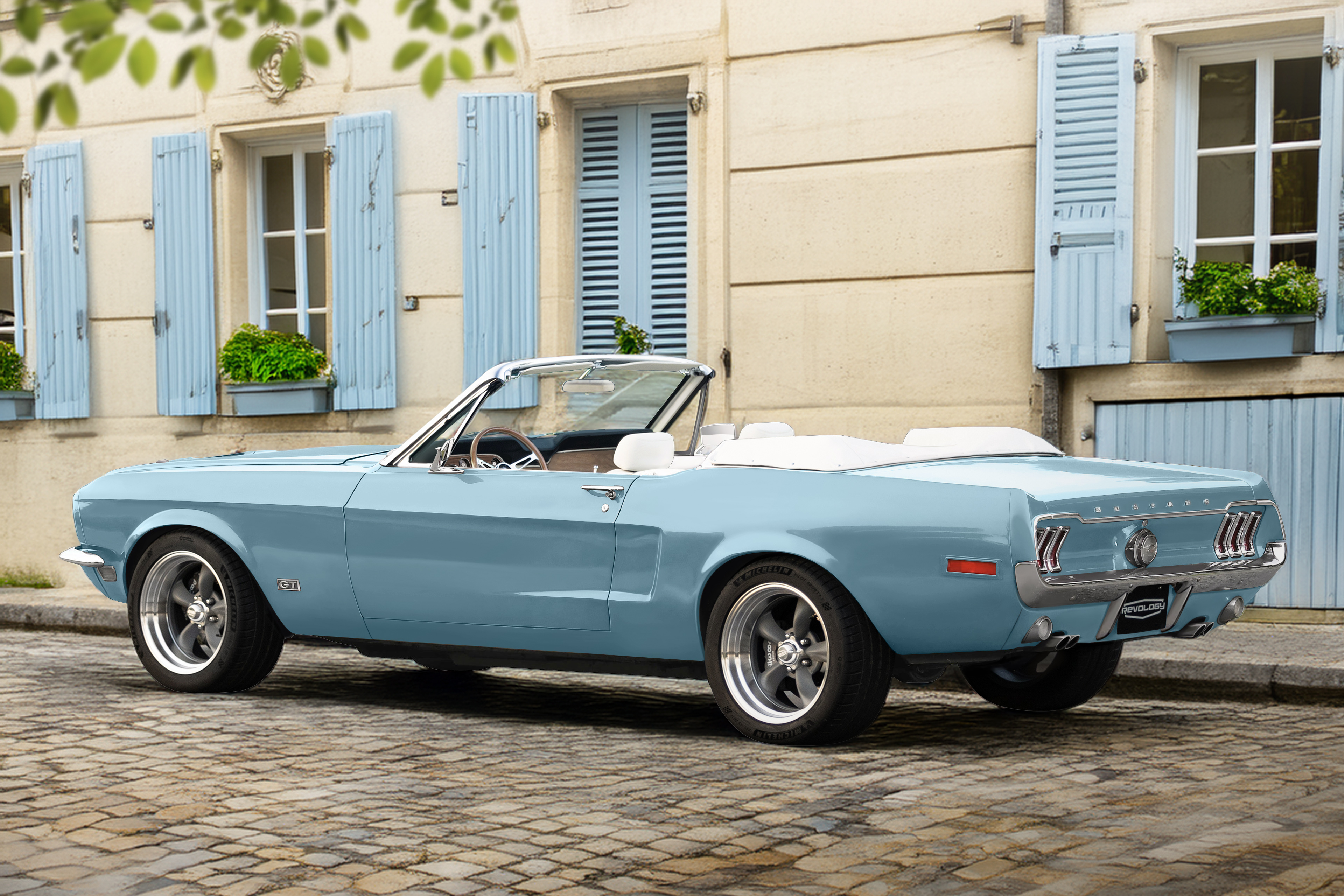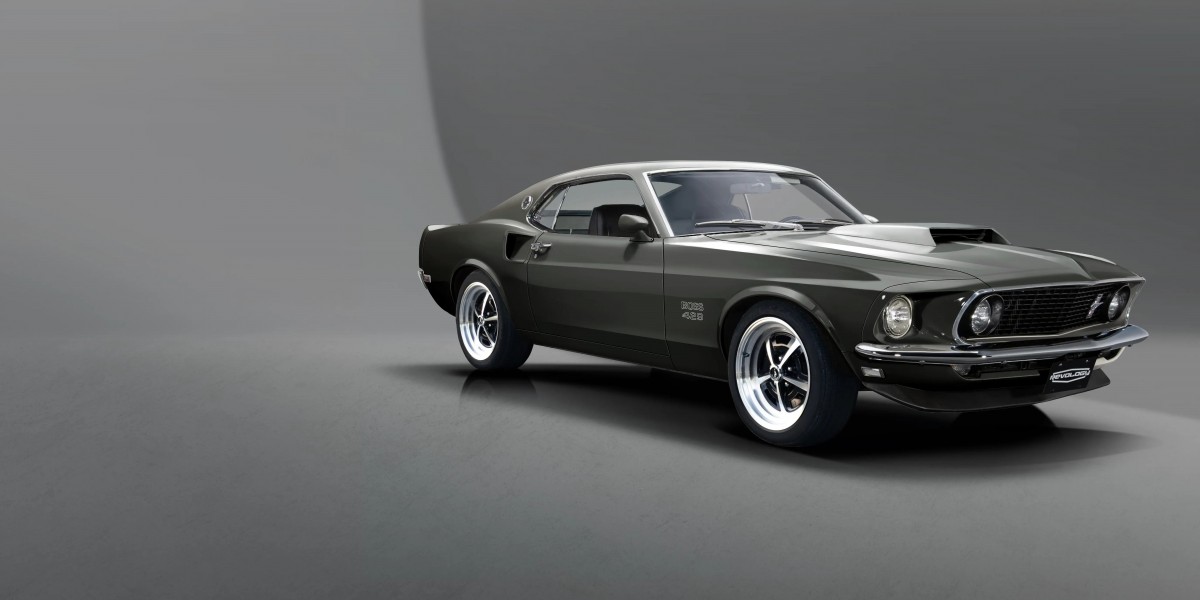Restoring a Ford Mustang is a rewarding yet complex endeavor that demands careful planning and expertise. Since its debut in 1964, the Ford Mustang has captivated enthusiasts with its iconic design and performance, making it a prime candidate for restoration. Whether you’re reviving a 1965 Fastback or a 1970 Mach 1, the process involves assessing the car’s condition, sourcing parts, and balancing authenticity with modern upgrades. Companies like Revology Cars offer an alternative by producing modern reproductions that blend classic style with contemporary technology, but for purists, restoring an original Mustang is a labor of love. This guide explores the essential aspects of Ford Mustang restoration to help you make informed decisions.

Assessing the Vehicle’s Condition
Before starting a Ford Mustang restoration, evaluate the car’s condition thoroughly. Begin with a detailed inspection of the body, frame, and undercarriage for rust, dents, or structural damage. Mustangs from the 1960s and 1970s are prone to corrosion, especially in floor pans and quarter panels. Check the engine, transmission, and suspension for wear, as these components often require rebuilding or replacement. A professional mechanic or restoration expert can provide a comprehensive assessment, helping you estimate costs and identify potential challenges. This step is critical to avoid unexpected expenses and ensure the project stays on track.
Creating a Restoration Plan
Once you’ve assessed the Ford Mustang, develop a detailed restoration plan. Decide whether you aim for a concours-level restoration, prioritizing originality, or a restomod with modern upgrades like those offered by Revology Cars. Outline the scope of work, including bodywork, mechanical repairs, and interior refurbishment. Set a realistic timeline, as full restorations can take 1–2 years, depending on the car’s condition and your resources. A clear plan helps manage expectations and ensures the project aligns with your vision, whether it’s a show car or a daily driver. Key considerations include:
Defining the restoration’s purpose (show car, driver, or investment).
Prioritizing tasks based on the car’s condition.
Allocating time for sourcing rare parts or hiring specialists.
Budgeting for Restoration Costs
Restoring a Ford Mustang can be expensive, with costs ranging from $20,000 to over $100,000, depending on the model and restoration goals. Key expenses include parts, labor, and specialized tools. Rare models like the 1967 Shelby GT500 require pricier components, while common parts for 1965–1966 models are more affordable. Labor costs vary based on whether you hire professionals or do the work yourself. Budget for unexpected issues, such as hidden rust or engine problems, which can inflate costs. Revology Cars’ reproductions, starting at around $270,000, offer a fixed-cost alternative for those seeking a new Mustang with modern reliability.
Beyond parts and labor, Ford Mustang restorations involve hidden costs that can derail your budget. Shipping fees for rare parts, especially for Shelby or Mach 1 models, can add up quickly. Refinishing chrome trim or sourcing original upholstery may require custom work, increasing expenses. If you’re outsourcing tasks like paint or engine rebuilding, shop around for reputable specialists to avoid overpaying. Factoring in a 20–30% contingency fund helps cover surprises, ensuring your Ford Mustang restoration stays financially manageable.
Sourcing Parts for Your Ford Mustang
Finding authentic parts is a cornerstone of Ford Mustang restoration. The availability of parts depends on the model and year, with 1964½–1969 Mustangs benefiting from a robust aftermarket. Common components like bumpers, grilles, and interior trim are readily available through suppliers like CJ Pony Parts or Mustang Depot. However, rare parts for high-performance models, such as the 1969 Shelby GT350’s fiberglass hood, may require hunting through salvage yards or auctions. Revology Cars bypasses this challenge by building new Mustangs with modern components, but for traditional restorations, patience and research are key.
The parts market for Ford Mustangs is vast but requires discernment. Aftermarket parts are often cheaper than originals but may compromise authenticity. For concours restorations, prioritize OEM or NOS (New Old Stock) parts, which are pricier but maintain historical accuracy. Online forums like the Mustang Owners Club and eBay can connect you with sellers, but verify part authenticity to avoid fakes. For restomods, consider modern upgrades like disc brakes or LED lighting, which Revology Cars integrates into their builds to enhance performance without sacrificing style.
Balancing Authenticity and Modernization
Deciding between authenticity and modernization is a critical choice in Ford Mustang restoration. Purists may opt for original specifications, using period-correct parts to preserve historical value. Others prefer restomods, incorporating upgrades like fuel-injected engines or power steering for better drivability. Revology Cars exemplifies this balance, equipping their Mustangs with 5.0-liter Coyote V8s and six-speed transmissions while retaining the classic look. Your choice depends on your goals—whether to showcase the car at concours events or enjoy it as a reliable cruiser.
Skills and Tools Needed for Restoration
Restoring a Ford Mustang requires a mix of mechanical, bodywork, and electrical skills. Basic tasks like replacing trim or interior components are manageable for DIY enthusiasts with standard tools, such as wrenches and socket sets. However, advanced work like engine rebuilding or welding rust repairs demands specialized skills and equipment, such as a MIG welder or engine hoist. If you lack experience, consider taking courses at a local trade school or hiring professionals for complex tasks. Revology Cars’ turnkey approach eliminates the need for DIY skills, but traditional restorations reward hands-on involvement.
Learning Through Community Resources
The Ford Mustang community is a valuable resource for aspiring restorers. Clubs like the Mustang Club of America offer workshops, forums, and events where you can learn from experienced enthusiasts. Online platforms like YouTube provide tutorials on tasks like suspension upgrades or paint prep. For those seeking a hassle-free option, Revology Cars’ reproductions require no restoration skills, delivering a finished product with modern reliability. Engaging with the community not only builds expertise but also connects you with trusted vendors and restorers.
For DIY Ford Mustang restoration, invest in quality tools to streamline the process. A comprehensive tool kit should include a floor jack, jack stands, and a torque wrench for mechanical work. For bodywork, a dual-action sander and spray gun are essential for achieving a smooth finish. Diagnostic tools like an OBD scanner can help troubleshoot electrical issues, especially in later models. While Revology Cars’ builds eliminate the need for tools, DIY restorers benefit from a well-equipped garage to tackle the project efficiently.

Final Thoughts
Restoring a Ford Mustang is a journey that combines passion, skill, and strategic planning. From assessing the car’s condition to sourcing parts and managing costs, each step requires careful consideration to achieve a stunning result. Whether you choose a traditional restoration to preserve the Mustang’s legacy or explore modern reproductions from Revology Cars, the process is deeply rewarding. The Ford Mustang’s timeless appeal, coupled with its vibrant community and rich history, makes it an ideal candidate for restoration. With the right approach, your Mustang can shine as a testament to automotive excellence.
FAQs
Where can I find parts for a Ford Mustang restoration?
Parts are available through aftermarket suppliers like CJ Pony Parts, eBay, or Mustang clubs. Rare components may require salvage yards or auctions for authenticity.
Should I restore my Ford Mustang myself or hire professionals?
DIY is viable for those with skills and tools, but complex tasks like engine work often require professionals. Revology Cars offers a no-hassle alternative with new builds.
What’s the difference between a restoration and a restomod?
Restoration focuses on originality using period-correct parts, while restomods add modern upgrades like those in Revology Cars’ Mustangs for improved performance.
How long does a Ford Mustang restoration take?
Full restorations typically take 1–2 years, depending on the car’s condition and your resources. Professional shops may work faster but at a higher cost.
Are Revology Cars’ Mustangs a good alternative to restoration?
Revology Cars offers new Mustangs with modern technology and classic style, ideal for those wanting reliability without the restoration process. They start at $270,000.
































